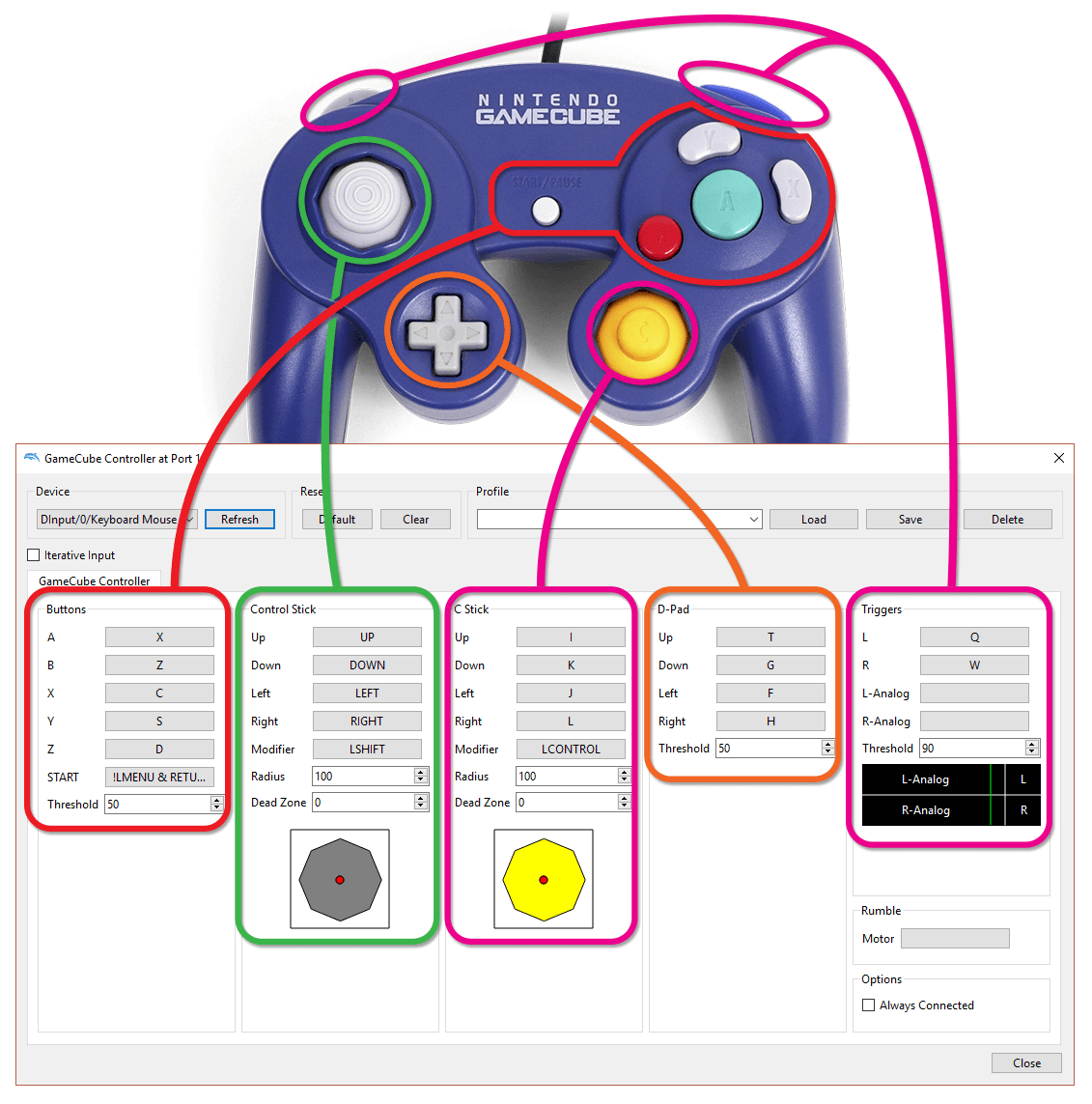

- Configure keyboard for dolphin emulator mac mac os#
- Configure keyboard for dolphin emulator mac manuals#
- Configure keyboard for dolphin emulator mac skin#
- Configure keyboard for dolphin emulator mac software#
- Configure keyboard for dolphin emulator mac code#
Select "Real Wii Remote" in the dropdown for a Wii Remote slot to use a real-world Wii Remote connected to your PC via bluetooth for that slot. You can also assign the Wii Remote to connect it as an emulated controller by selecting "Connect Wii Remotes for Emulated Controllers". In the Wii Controllers config area, you have the option to use real or emulated Wii Remotes, as well as choosing to passthrough a Bluetooth Adapter (see Bluetooth Passthrough) or emulating the Wii's adapter. It is within each port's own "Configure" button. They will be handled entirely in the GameCube Controller Configuration window. The controller order on the PC does not have to equal to GameCube controller port order. The emulated GameCube controllers themselves are referred to as "Standard Controller" in the dropdown menu. In the Gamecube Controllers config area, you can configure or disable the emulated GameCube controller ports. The main controller configuration window will appear, as seen in the screenshot below. To open and manage the controller settings for Dolphin, from the Dolphin's main window, navigate to Options -> Controller Settings, or simply click the "Controllers" button. 2.1 Real GameCube Controller (GameCube Adapter).For performance tuning tips, see the Setup Guide.Ĭheck out the homepage or download it from the Box File Widget. Some things run fine on a 200 MHz machine, others are slow on a 2 GHz machine.
CPU and graphics performance varies a lot, depending on the openMSX settings and the MSX hardware and software you’re emulating. If you are compiling on a new platform, please share your experiences (see below for contact info), so we can make openMSX more portable. Running on other operating systems (wherever SDL runs) or CPU’s should be possible, but may require some modifications to the build system. openMSX is confirmed to run on the following operating systems: Linux, Win32, Mac OS X, FreeBSD, OpenBSD and NetBSD on x86, x86-64, PPC, ARM and Sparc CPU’s. Keep in mind that openMSX is still evolving at a considerable speed. We do try to be backwards compatible for at least one release, though. Keep this in mind if you create machine descriptions, ROM database entries etc. This happened between 0.4.0 and 0.5.0, for example. Until we reach version 1.0.0, file formats can change in an incompatible way without backwards compatibility. Make sure you read this if you haven’t used openMSX before, but also to learn more about the new and changed features. In “doc/manual/index.html” you can find a set of HTML manuals for openMSX. And of course the usual various bug fixes. For Laserdisc support (which is optional), added dependency on libogg, libvorbis and libtheora. Added platform/CPU support for: PA-RISC, Dingoo, SuperH, Nokia N900/Maemo, MacOSX 10.6 / 64-bit, GNU/kFreeBSD, Atmel AVR32. Added emulation of the trackball (thanks n_n). – minor fixes in V99×8, V9990, YM2413 and YMF278 emulation. Added support for balance per channel, including support for the “stereo” effect of the FM Stereo PAK and the stereo PSG of the Pioneer PX-7. Added emulation of Palcom Laserdisc games on the Pioneer PX-7/PX-V60 (note: not visible in screenshots and video recording yet).  Experimental (still primitive) support for TAS ( ). – music keyboard (visualize notes of sound chips). – experimental OSD script for tabbed MSXing (controllable from OSD menu). New scripts that demonstrate the OSD framework:. Added OSD mouse support, you can now easily create drag and drop of MSX objects, for instance. Added OSD virtual keyboard (only international QWERTY layout for now) for devices without keyboard.
Experimental (still primitive) support for TAS ( ). – music keyboard (visualize notes of sound chips). – experimental OSD script for tabbed MSXing (controllable from OSD menu). New scripts that demonstrate the OSD framework:. Added OSD mouse support, you can now easily create drag and drop of MSX objects, for instance. Added OSD virtual keyboard (only international QWERTY layout for now) for devices without keyboard. Added new icon skin especially made for handhelds.Various tweaks to OSD menu: new colors (thanks Wolf), save states show date, toys menu, ….Renamed “update” command to “openmsx_update” to avoid conflicts with the native Tcl command.
Many speed and code size optimizations, developed in the context for the Dingoo port. Better SDLGL-PP TV scaler, sensitive to scanline setting. Added possibility to link to Generation MSX from within scripts. – added several new debuggables: keymatrix, joystick ports, romblock. – added information on last address/value written which triggered watch point. For more information on usage, please see the (links in the) FAQ of the manual. Added reverse: go back in time to correct mistakes or replay your actions (use PgUp and PgDn to control, enable visualization of this feature with this console command: set auto_enable_reverse gui). I haven’t used this emulator before so let’s head straight to the changes.






 0 kommentar(er)
0 kommentar(er)
